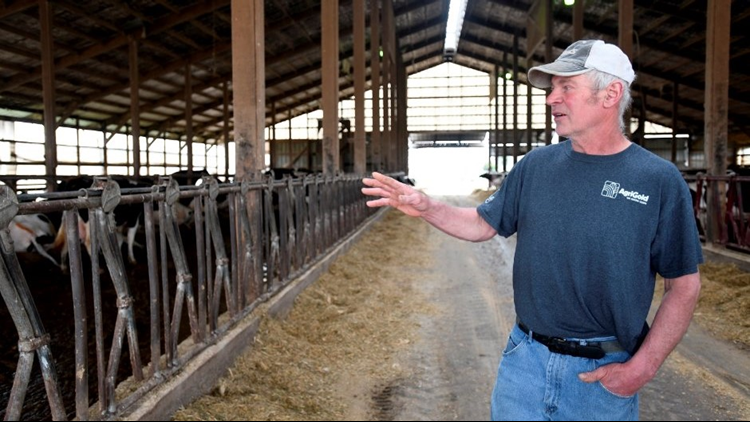LOUISVILLE, Ohio (AP) — A dairy farm operated for four generations by one Ohio family is set to run dry.
Dwight Raber, of Raber Dairy Farms in northeast Ohio's Stark County, said he's losing money and can no longer make a living doing the work his father, grandfather and great-grandfather did before him. His farm, which has grown to 500 acres (200 hectares) over the years, was founded by his great-grandfather who came to the U.S. from Switzerland in 1891.
Raber is scheduled Wednesday to auction off his dairy cows and much of the dairy equipment he has accumulated, The Repository in Canton reported .
Raber said he needs to make at least $16 per 11.6 gallons (44 liters) of milk to break even, but he's been stuck at $13.89 for the past two years.
"He has poured his heart into this farm," said Raber's wife, Julia Raber, an English teacher at East Canton High School. "He just goes and goes, 24/7. But it's time to slow down; it really is. His mother also told him, 'Please don't ruin your health.'"
The 58-year-old farmer was hospitalized with blood clots last year.
The number of dairy farms in Ohio dropped by more than 600 between January 2017 and January 2019, according to statistics from the Ohio Department of Agriculture. Another 51 dairy farms have been lost in 2019, bringing the total to slightly fewer than 2,000.
"The trend is alarming," said Dianne Shoemaker, an Ohio State University extension field specialist in dairy product economics.
Shoemaker said the business has changed dramatically in the past 25 years, with smaller profit margins often driving farms to expand to survive.
Cheaper milk flowing into the state from Michigan mega-farms has contributed to the pressure Ohio dairy farmers have felt, Shoemaker said. While 2014 year was a boom year for Ohio dairy farmers, it's been bad for four years in a row, she said.
Several years ago, Raber added beef cattle to his farm in Nimishillen Township to supplement the dairy portion. He plans to grow that herd and sell crops that in the past were used to feed his dairy cows.
Raber acknowledged he's "a little scared" about making the change from dairy farming, but said beef cattle require less maintenance. That extra time will allow him to tidy up the property.
"This was a showplace," he said. "I want to return it to that."
___
Information from: The Repository, http://www.cantonrep.com



